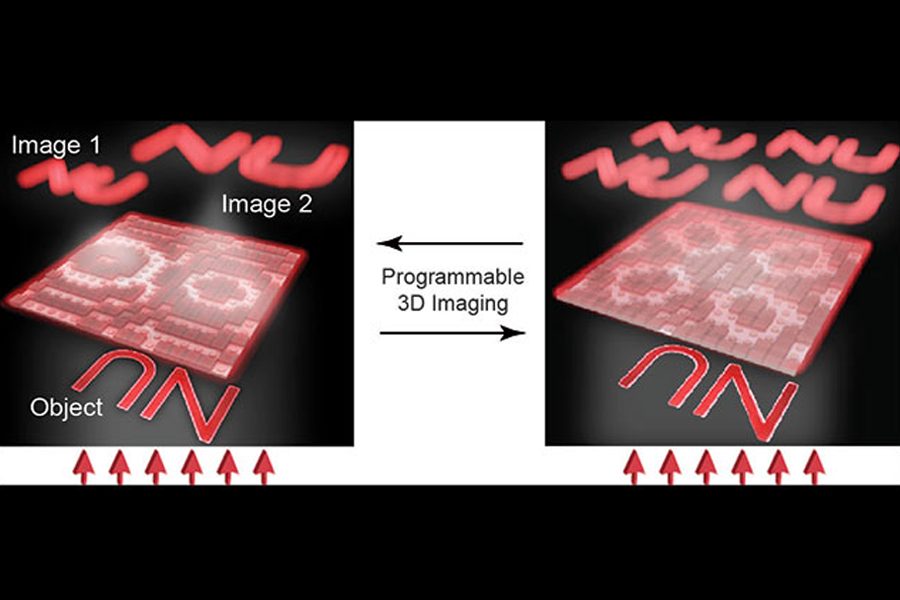NU researchers develop new optical technology that may one day replace traditional refractive lenses
The graphic displays the process through which images can be displayed at programmable 3D positions. Northwestern researchers developed these optical elements.
April 2, 2019
A team of Northwestern researchers has developed tiny optical elements that could one day replace traditional refractive lenses, according to a March 28 Northwestern news release .
The team, led by Weinberg Prof. Teri W. Odom, constructed the lens using cylindrical silver nanoparticles and polymer, the release said. The ultimate product is incredibly thin, measuring one-hundredth the width of a human hair.
“This miniaturization and integration with detectors offers promise for high-resolution imaging in devices from small wide-angle cameras to miniature endoscopes,” Odom said in the release.
The researchers’ findings were detailed in a study titled “Lattice-Resonance Metalenses for Fully Reconfigurable Imaging” in ACS Nano, an American Chemical Society journal. The device, according to the release, can transform from a single-focus lens to a multi-focus lens, producing multiple images at “any programmable 3D position.”
The new lens falls under the umbrella of a special kind of lens — the metalens – which has emerged as an “attractive option” for flat lens construction, the release said. The new lens technology may be one day used to “realize portable imaging systems and optoelectronic devices.”
“This scalable method enables different lens structures to be made in one step of erasing and writing, with no noticeable degradation in nanoscale features after multiple erase-and-write cycles,” the release said. “The technique that can reshape any pre-formed polymer pattern into any desirable pattern using soft masks made from elastomers.”
Email: [email protected]
Twitter: @pranav_baskar


